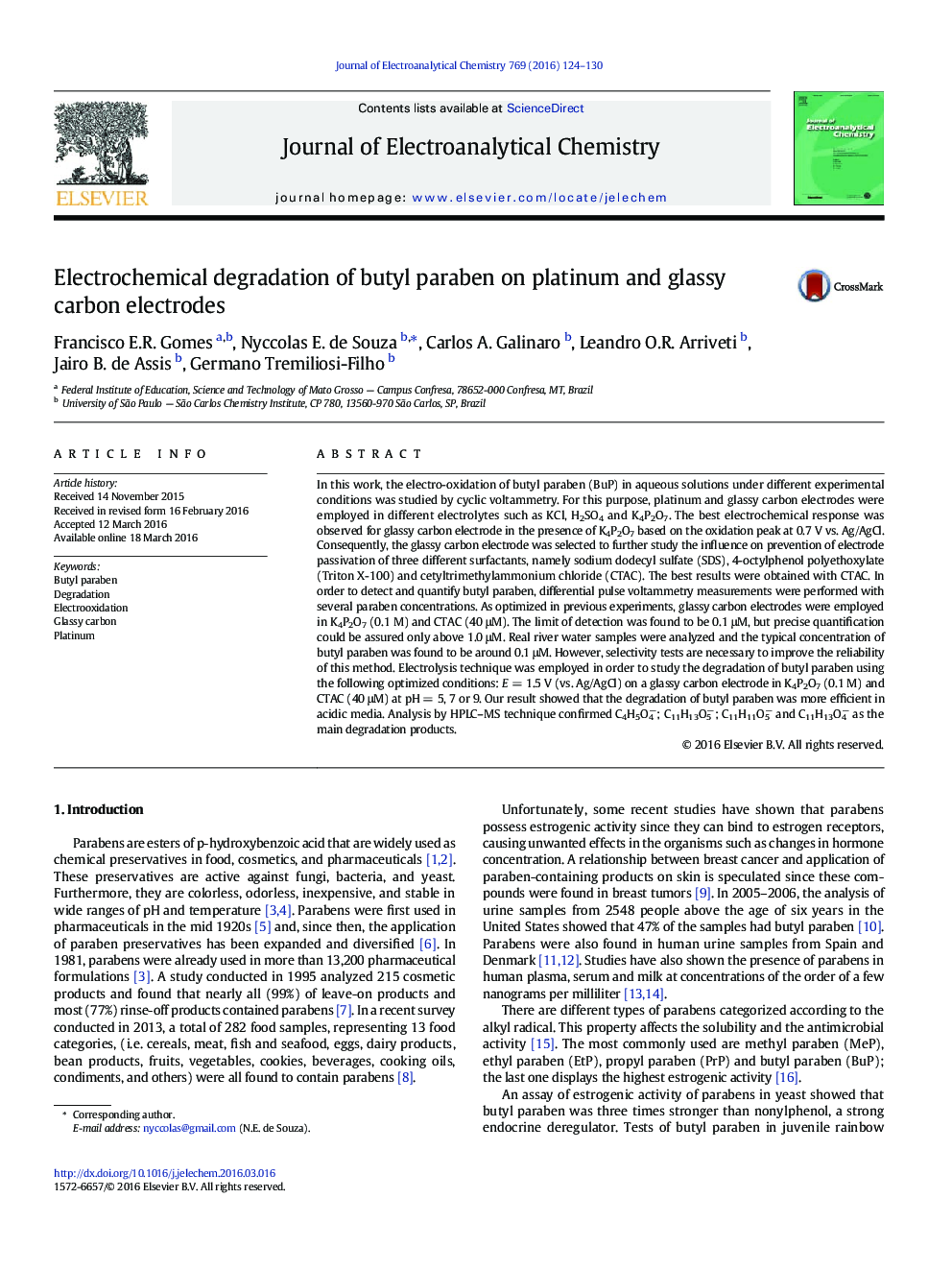| Article ID | Journal | Published Year | Pages | File Type |
|---|---|---|---|---|
| 217954 | Journal of Electroanalytical Chemistry | 2016 | 7 Pages |
In this work, the electro-oxidation of butyl paraben (BuP) in aqueous solutions under different experimental conditions was studied by cyclic voltammetry. For this purpose, platinum and glassy carbon electrodes were employed in different electrolytes such as KCl, H2SO4 and K4P2O7. The best electrochemical response was observed for glassy carbon electrode in the presence of K4P2O7 based on the oxidation peak at 0.7 V vs. Ag/AgCl. Consequently, the glassy carbon electrode was selected to further study the influence on prevention of electrode passivation of three different surfactants, namely sodium dodecyl sulfate (SDS), 4-octylphenol polyethoxylate (Triton X-100) and cetyltrimethylammonium chloride (CTAC). The best results were obtained with CTAC. In order to detect and quantify butyl paraben, differential pulse voltammetry measurements were performed with several paraben concentrations. As optimized in previous experiments, glassy carbon electrodes were employed in K4P2O7 (0.1 M) and CTAC (40 μM). The limit of detection was found to be 0.1 μM, but precise quantification could be assured only above 1.0 μM. Real river water samples were analyzed and the typical concentration of butyl paraben was found to be around 0.1 μM. However, selectivity tests are necessary to improve the reliability of this method. Electrolysis technique was employed in order to study the degradation of butyl paraben using the following optimized conditions: E = 1.5 V (vs. Ag/AgCl) on a glassy carbon electrode in K4P2O7 (0.1 M) and CTAC (40 μM) at pH = 5, 7 or 9. Our result showed that the degradation of butyl paraben was more efficient in acidic media. Analysis by HPLC–MS technique confirmed C4H5O4−; C11H13O5−; C11H11O5− and C11H13O4− as the main degradation products.
